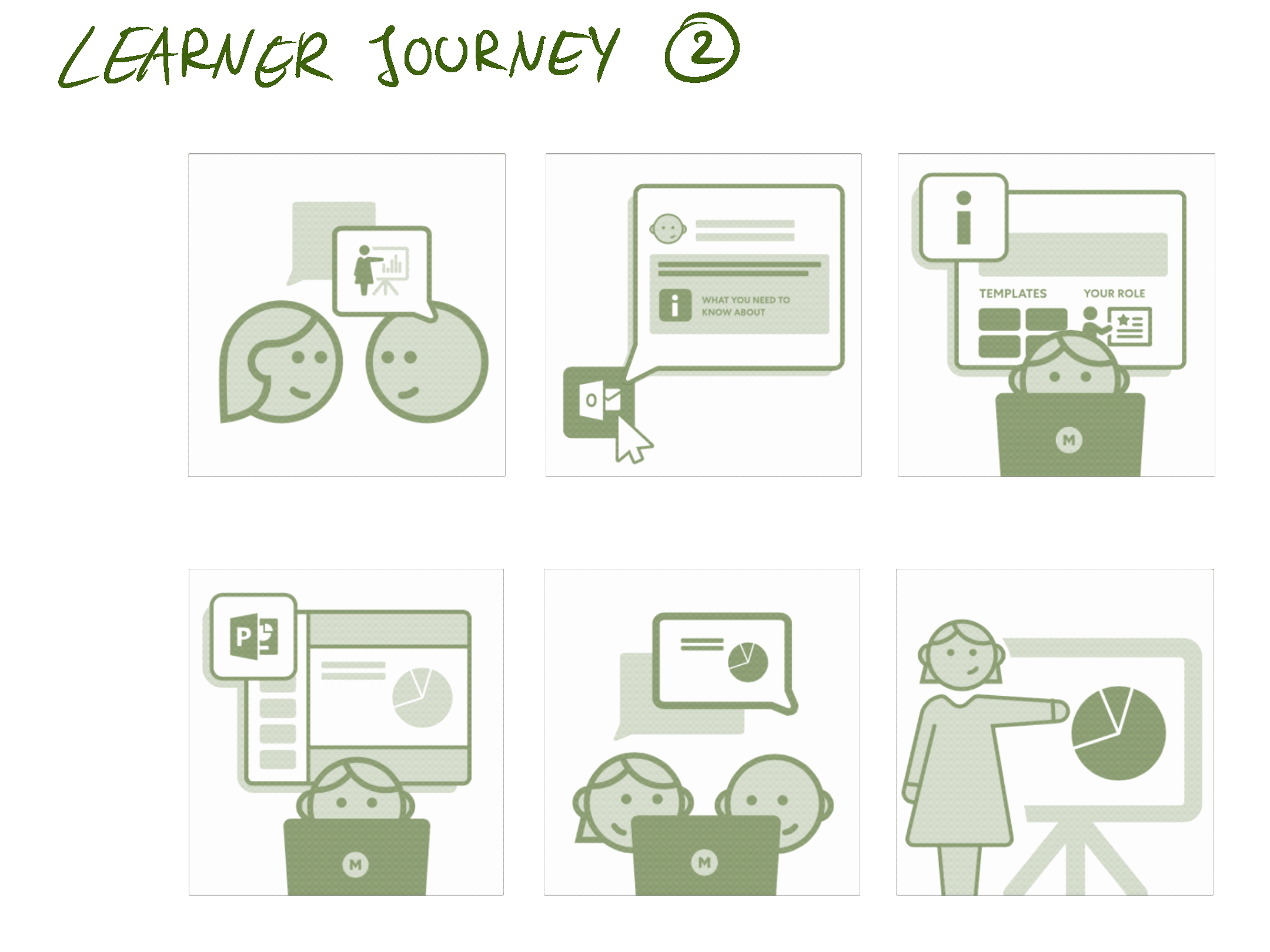Global food manufacturer, 45bn revenue, 130k employees
“Define our design practice, processes and tools. Build a learning curriculum and content for teams across the globe and across functions. Consider multi-modal delivery and pilot a learning platform.”
Approach
Frame current barriers to learning and articulate current vs. future state (from-to)
Profile learning requirements across busniess units, regions, functional expertise and hierarchies
Define learning outcomes for the different audiences and develop flexible curricula (learning journeys)
Build the learning ecosystem architecture and content, and determine mode of delivery
Build a pilot training module to test with audiences, gather feedback and make adjustments for following modules
Multi-modal Learning Ecosystem
Stakeholder, audience and subject matter expert interviews revealed that processes and tools commonly used weren’t accessible or regarded as relevant only to a particular function (R&D). The learning ecosystem is therefore designed to meet people where they’re at. It includes
Training content hosted on an interactive learning platform, tiered into foundational, essential and advanced learning content
Online support for specific project questions
On-project coaching support by subject matter experts, both ad-hoc and via dedicated project coaching roles
Databases for external expert support (rosters), and other people resources
Leadership awareness content and touch points
Training Platform Curriculum
The comprehensive curriculum was created using Bloom’s Taxonomy. It resulted in a tiered training content structure that layered knowledge and comprehension with activities to increase abilities of application and analysis. As learners progress they are increasingly challenged to think critically, eventually becoming subject matter experts, and coaches. Learners who only need awareness training or input as they are asked to contribute to a process, are met with actionable exercises and key questions to ask, good and bad output examples and the possibility to have their inputs reviewed by a coach. The flexible training content allowed for courses to be tailored without having to gather and package resources, meeting the needs of a wide range of audiences with success.
Adaptive Learning System Pilot & Flexible Learning Journeys
The learning management system tested was Area9 Rhapsode. It uses machine learning, artificial intelligence and cognitive engineering to support various types of learners. Building the pilot required articulating probes, pairing those with learning resources and learning objectives (e.g. a question referring to a visual stimuli that aims to assess the degree of understanding of a subject matter). Different learning objectives, modules and whole courses could be bundled to tailor learning journeys for different audiences, while the system responded to learner’s progress and allowed automised performance management.
Keywords: capability development, learning system, platform integration, design, upskilling








